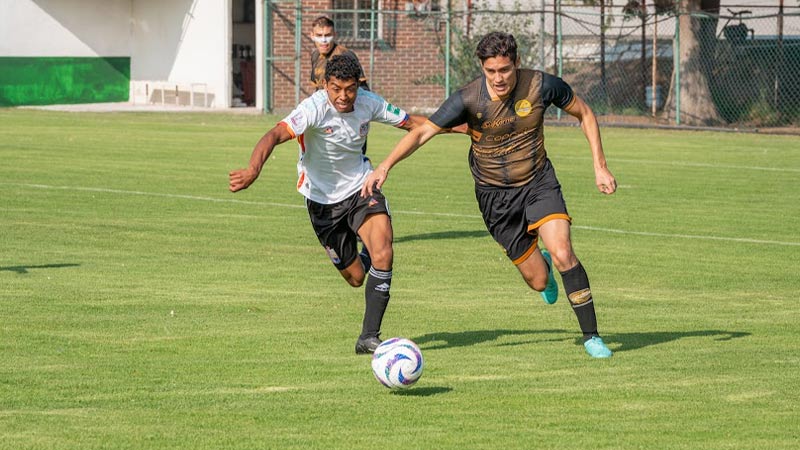Defensive prowess is the backbone of a successful soccer team, and mastering the art of defending requires rigorous training and strategic drills. As defenders play a critical role in preventing goals and securing victories, a well-rounded defensive skill set is invaluable on the pitch.
In this blog post, we present a comprehensive Soccer Defense Drills List to help players and coaches refine their defensive abilities and strengthen their team’s backline.
Whether you’re an aspiring defender looking to elevate your game or a coach seeking to build a robust defensive unit, these drills will provide the necessary foundation for success. Let’s dive into the essential defensive drills that will take your soccer game to the next level.
Soccer Defense Drills List
In this Soccer Defense Drills List, we present essential training exercises to strengthen defensive skills and improve team cohesion.
From jockeying and tackling techniques to defending set-pieces, these drills cater to players of all levels, helping them become formidable defenders on the soccer pitch.
Cone Dribbling and Agility Drill
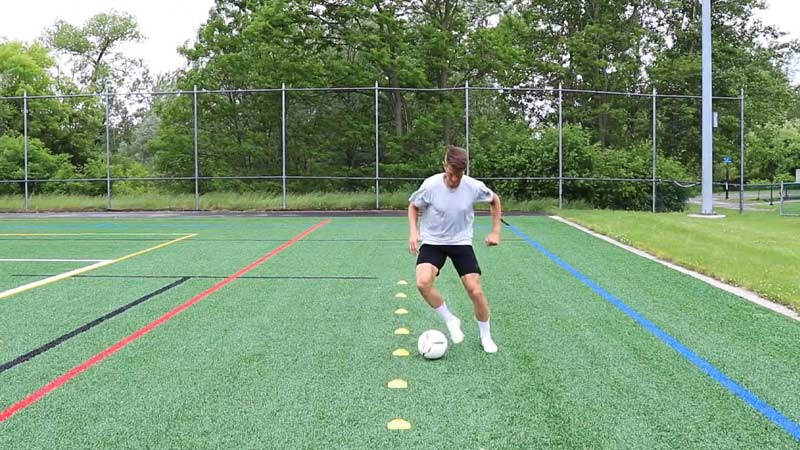
The Cone Dribbling and Agility Drill is an essential soccer defense exercise that aims to improve a defender’s footwork, quickness, and ball control. This drill involves setting up a series of cones in a zigzag pattern, and the defender must dribble the ball through the course as quickly as possible.
By weaving through the cones, defenders enhance their lateral movement and develop the ability to change direction rapidly, skills crucial for marking and shadowing opponents effectively.
Additionally, the drill enhances players’ spatial awareness and their ability to keep the ball close, making them more adept at defending attackers in close quarters. Practicing this drill regularly enables defenders to become more agile, enhancing their overall defensive performance on the field.
1v1 Defending Drill
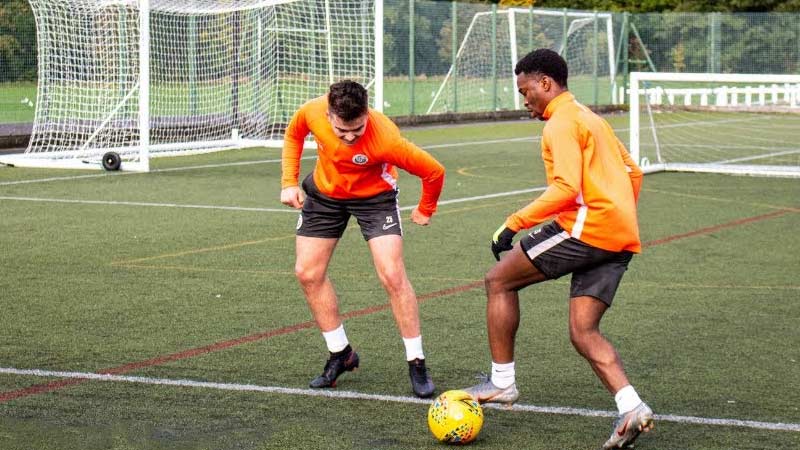
The 1v1 Defending Drill is a fundamental exercise that hones a defender’s individual defensive skills when facing an opponent one-on-one.
This drill simulates real-game situations, where a defender must effectively contain an attacker without resorting to reckless challenges that might lead to fouls.
Players take turns as attackers and defenders, with the defenders aiming to force the attacker away from the goal or towards less dangerous areas.
Proper body positioning, jockeying, and timing are emphasized, enabling defenders to anticipate the attacker’s moves and make well-timed tackles or interceptions.
The 1v1 Defending Drill not only builds defenders’ confidence but also instills discipline, as they learn when to engage an opponent and when to delay and wait for support from teammates.
Pressing and Covering Drill
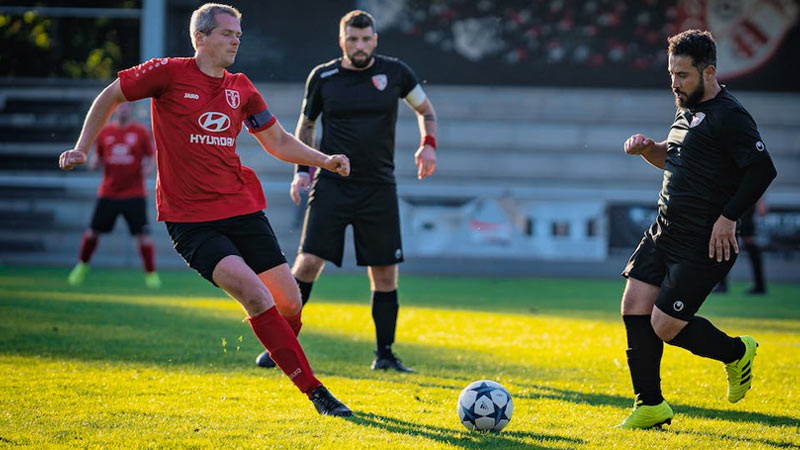
The Pressing and Covering Drill emphasizes coordinated defensive efforts among the backline and midfield players. It trains defenders to work as a cohesive unit when pressing the opposition and covering potential passing lanes.
The drill involves a group of attackers and defenders, with the defenders aiming to press the attackers quickly once they enter their defensive third. As one defender steps forward to put pressure on the ball carrier, the others must adjust their positions to cover potential gaps and passing options.
This exercise develops players’ communication, teamwork, and decision-making skills, as effective pressing and covering require well-timed movements and effective communication among defenders.
Implementing this drill in training sessions enhances the team’s defensive organization and minimizes the risk of leaving open spaces for opponents to exploit.
Defending the Cross Drill
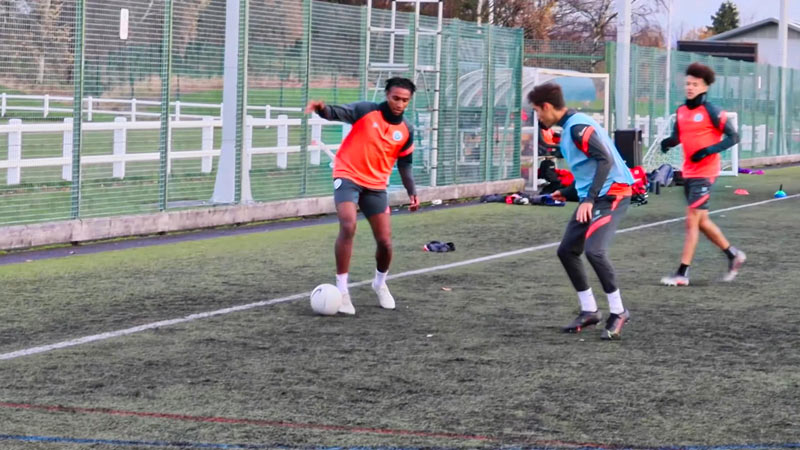
Defending crosses is a crucial aspect of soccer defense, and the Defending the Cross Drill focuses specifically on improving defenders’ abilities to deal with aerial threats.
In this exercise, coaches deliver crosses into the penalty area from various positions, and defenders must position themselves properly to clear the ball or mark attacking players effectively.
Proper timing, jumping technique, and body positioning are essential for defenders to successfully defend crosses and prevent dangerous scoring opportunities.
The Defending the Cross Drill not only enhances defenders’ aerial abilities but also fosters a sense of trust and coordination within the defensive unit, contributing to a more solid backline during matches.
Zigzag Cone Drill for Defenders
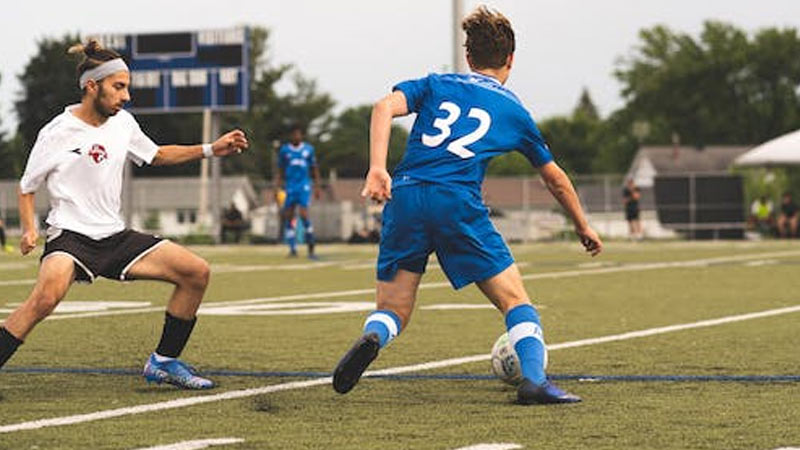
The Zigzag Cone Drill for Defenders is designed to enhance defenders’ agility, acceleration, and ability to make quick changes in direction. This drill involves setting up a series of cones in a zigzag pattern, and defenders must sprint through the course while zigzagging between the cones.
This exercise is particularly beneficial for full-backs and central defenders who often need to track wingers and forwards making diagonal runs. By mastering this drill, defenders improve their lateral movement, which is crucial for closing down opponents and cutting off passing lanes effectively.
Additionally, the rapid changes in direction challenge players’ balance and coordination, further honing their defensive skills. Regular practice of the Zigzag Cone Drill contributes to a defender’s overall athleticism and ensures they are well-prepared during competitive matches.
Recovery Runs and Tracking Drill
![]()
Recovery runs and tracking is fundamental skills for soccer defenders, ensuring they can quickly regain their positions and track opponents effectively. This drill emphasizes fitness, agility, and tactical awareness.
Players practice defensive maneuvers and positioning, followed by a coach triggering a simulated counter-attack or fast break. Defenders must sprint back and recover their positions swiftly to nullify the threat.
This exercise not only enhances players’ physical endurance but also hones their decision-making under pressure. By repeatedly practicing recovery runs, defenders learn to thwart attacks effectively, reducing the opposition’s scoring opportunities.
Defending Overloads Drill
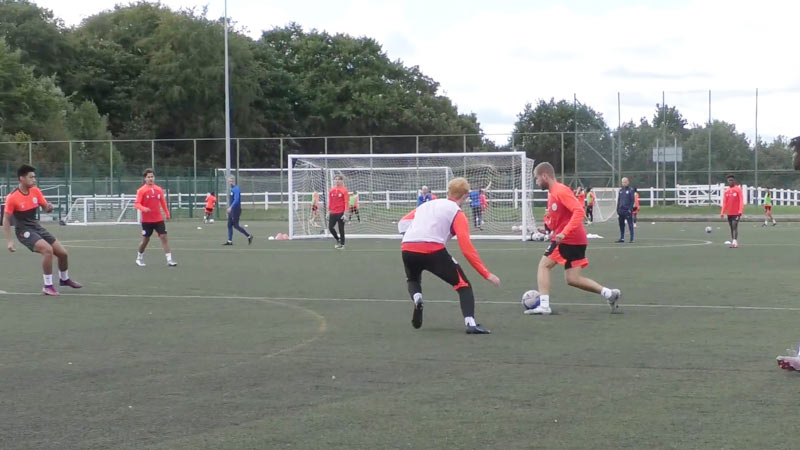
Defending against numerical disadvantages is a common scenario in soccer, especially when the opposition deploys an overload in a specific area of the field. This drill aims to improve defenders’ ability to cope with such situations and maintain defensive solidity.
The exercise typically involves an attacking team with more players than the defending team in a designated area. Defenders must communicate, shift as a unit, and make quick decisions to deny the attackers space and opportunities.
This drill sharpens players’ positional awareness, teamwork, and adaptability, fostering resilience against overwhelming odds. It also helps defenders to develop the art of pressuring opponents collectively while intelligently marking potential threats.
Defending Set Pieces Drill
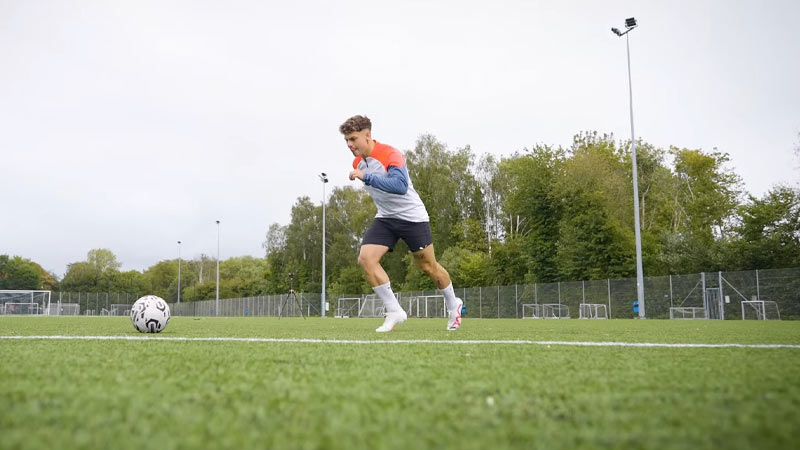
Set pieces, such as corners and free-kicks, are critical moments during a soccer match, often leading to goal-scoring opportunities. This drill focuses on the defensive organization and marking assignments during these high-pressure situations.
Defenders work on their zonal or man-marking techniques, positioning themselves strategically to nullify the opposition’s aerial threats. Coaches can simulate various set-piece scenarios to train defenders to maintain their concentration and discipline when facing unpredictable attacking plays.
By mastering this drill, defenders can significantly reduce the risk of conceding goals from set pieces, turning potential weaknesses into strengths, and gaining a competitive edge.
Passing Lane Interceptions Drill
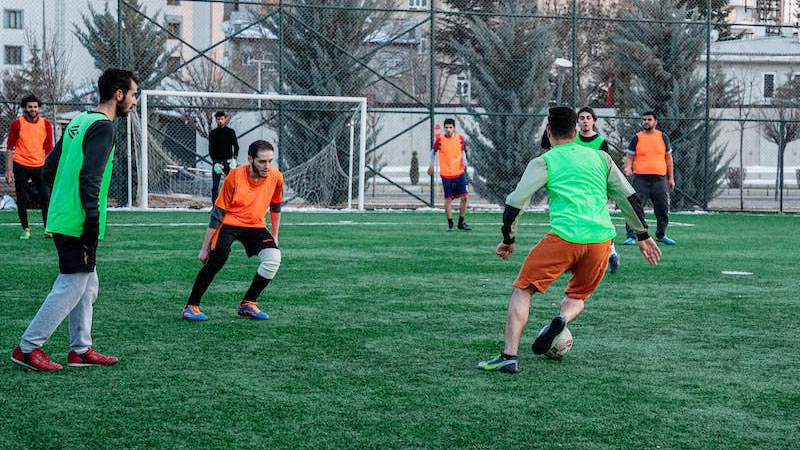
In soccer, intercepting passes is a vital skill that disrupts the flow of the opposition’s play and quickly transitions the game from defense to attack. This drill centers on defenders’ ability to read the game, anticipate passes, and intercept the ball effectively.
Coaches set up scenarios that encourage defenders to position themselves strategically to block passing lanes and cut off the opponent’s options. The drill also cultivates players’ decision-making, as they must choose when to intercept and when to hold their position.
A proficient passing lane interceptions drill enables defenders to create turnovers, seize possession, and launch counter-attacks, providing an added dimension to their defensive repertoire.
Communication and Organizing Drill
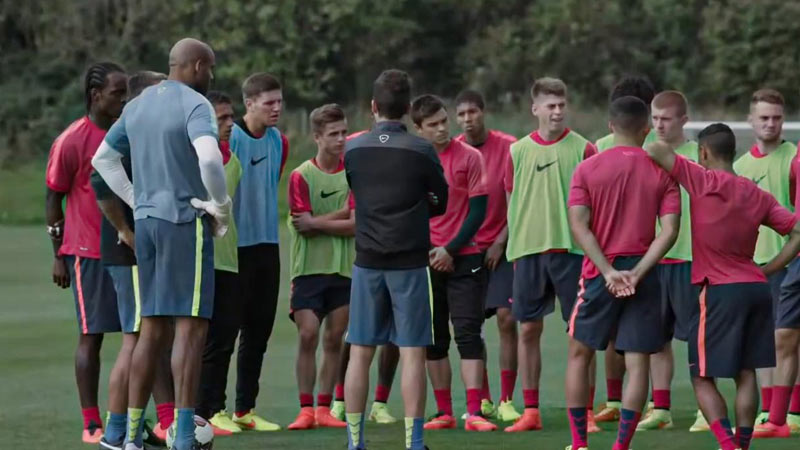
Effective communication among defenders is the backbone of a strong defense. This drill emphasizes the significance of clear and concise communication to coordinate defensive movements and coverages.
Players practice vocalizing information about the location of opponents, marking assignments, and potential threats. Additionally, defenders learn to organize the backline, midfield, and goalkeeper to maintain a cohesive defensive shape.
A well-organized defense is more difficult for attackers to penetrate and exploit. By honing their communication skills, defenders develop a shared understanding and trust, fostering a tighter defensive unit capable of handling even the most formidable opponents.
Man-Marking Drill
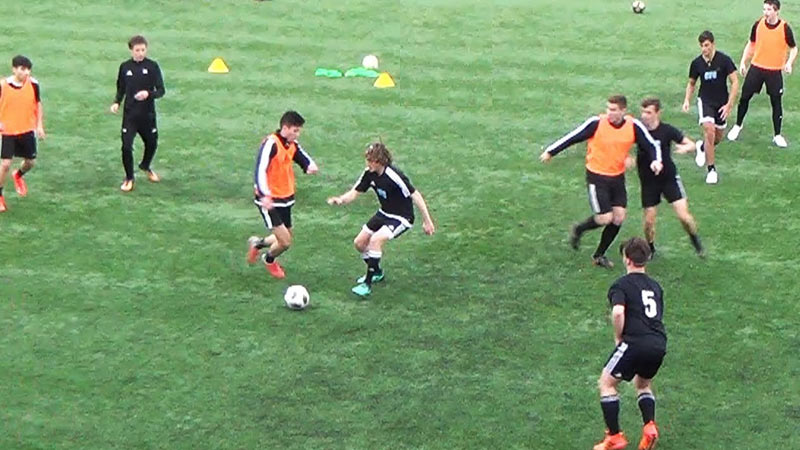
Man-marking is a defensive strategy where each defender is assigned to mark a specific opponent throughout the match. This drill helps defenders refine their man-marking skills, including tight marking, shadowing, and denying space to the assigned player.
The exercise involves simulated game situations where defenders focus on neutralizing their opponents effectively. It also enhances individual defensive capabilities, such as timing tackles, jockeying, and body positioning.
Proper man-marking can neutralize dangerous attackers and disrupt the opposition’s attacking patterns. However, it requires discipline, concentration, and exceptional one-on-one defending abilities, which this drill aims to cultivate in defenders.
Speed and Reaction Drill for Defenders
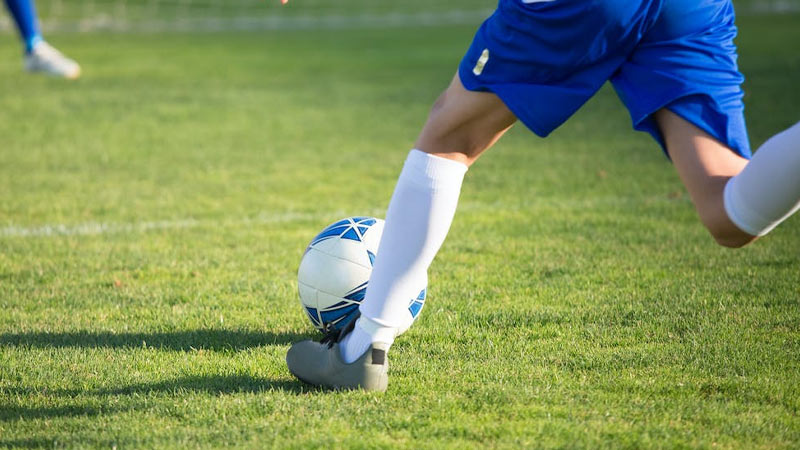
Defenders often face speedy and agile attackers who can exploit any lapse in concentration. This drill concentrates on enhancing defenders’ speed, agility, and reaction times. It involves various exercises like agility ladder drills, cone runs, and reaction-based games to develop quick reflexes and sharp movements.
Quick acceleration and deceleration are crucial for defenders to keep up with their opponents and quickly change direction. Improved reaction times enable defenders to anticipate the actions of attackers and intercept passes or make crucial tackles.
By consistently practicing this drill, defenders can become more assertive, confident, and effective in handling rapid attacking threats.
Jockeying and Delaying Drill
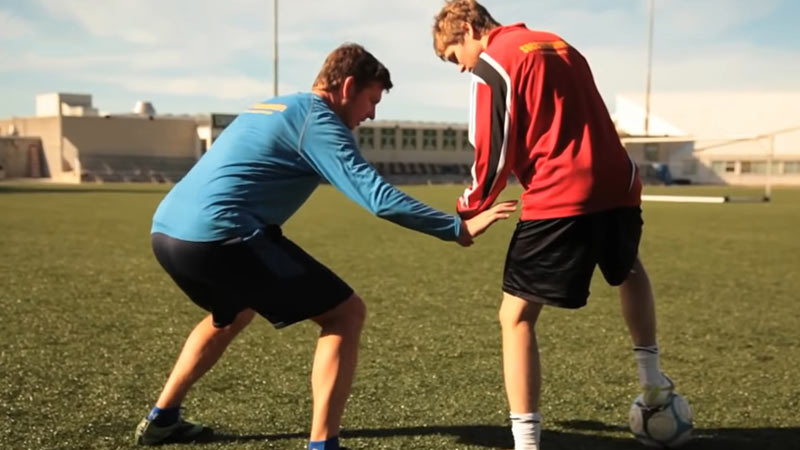
Jockeying and delaying are crucial defensive skills in soccer that help players maintain a strong defensive stance while assessing the attacker’s moves. In this drill, players practice their footwork and body positioning to control the attacker’s movements without committing too early.
They learn to stay patient, forcing the attacker into areas with limited attacking opportunities. The emphasis is on maintaining a low center of gravity, using quick and precise lateral movements, and using arms and body positioning to put pressure on the opponent effectively.
This drill improves players’ defensive decision-making, balance, and agility, making them more adept at frustrating attackers and buying time for their teammates to regroup defensively.
Defending in Pairs Drill
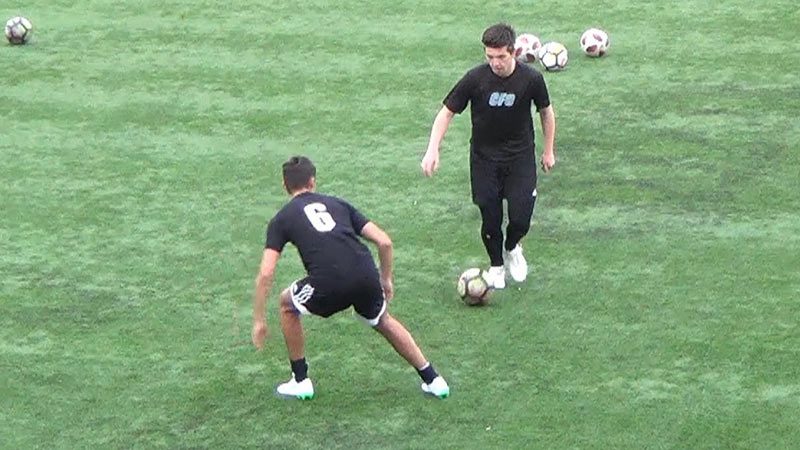
Defensive partnerships are the backbone of a solid defense in soccer. The defending in pairs drill aims to enhance communication, coordination, and understanding between two defenders. Players learn to work as a unit, covering each other’s positions, and anticipating each other’s movements.
The drill involves various defensive scenarios, such as 2v1, 2v2, and 2v3, to simulate real-game situations. Participants practice marking, tracking runs, and providing cover to effectively neutralize the attacking threat.
The drill fosters a strong defensive bond between players, ensuring they can handle the complexities of marking multiple opponents or covering vulnerable areas effectively.
Tackling Technique Drill
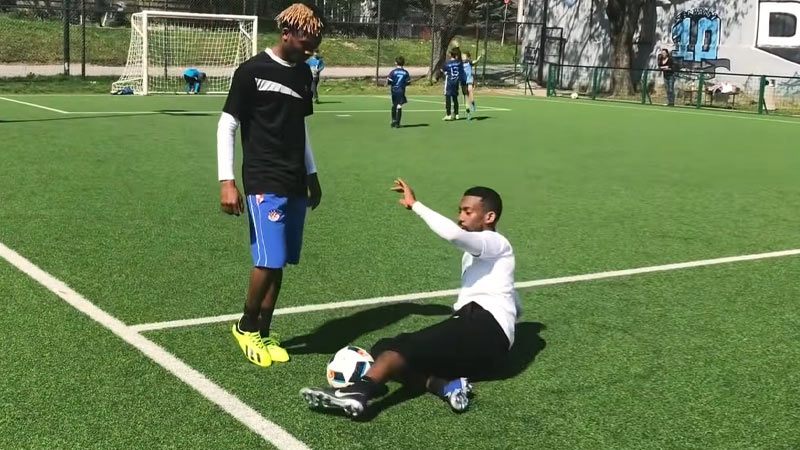
Tackling is a critical defensive skill, and this drill focuses on teaching players the proper techniques to win the ball cleanly and avoid fouls. Players learn the difference between a well-timed standing tackle and a slide tackle, understanding when to use each technique.
The emphasis is on getting close to the attacker, staying on their feet, and timing the tackle to dispossess them effectively. Coaches instruct on using the correct foot and body positioning to minimize the risk of conceding fouls or penalties.
Developing solid tackling abilities is essential to regain possession quickly and safely, and this drill helps players become more confident and assertive in their defensive actions.
Defensive Heading Drill
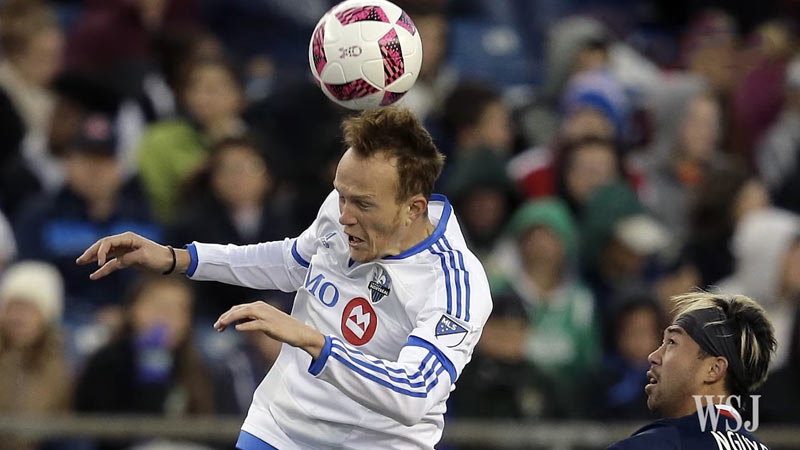
The heading is a crucial defensive aspect, especially when dealing with high balls and set pieces. In this drill, defenders practice defensive heading techniques to clear the ball from dangerous areas effectively.
They learn to judge flight trajectories, time their jumps accurately, and make solid contact with the ball using their forehead.
Additionally, the drill incorporates defensive organization, with players understanding their roles during corner kicks and free-kicks to mark opponents and protect vulnerable zones.
Defending Counterattacks Drill
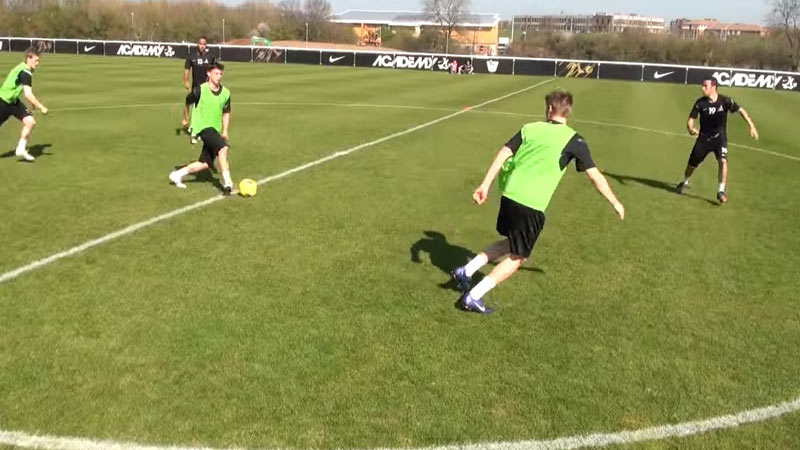
Effective defensive transitions are vital in stopping counterattacks, as opponents exploit the space left open during offensive movements. In this drill, defenders work on quickly transitioning from an attacking position to a defensive stance when possession is lost.
Players learn to sprint back, prioritize their defensive duties, and communicate effectively to close down attackers. Coaches focus on teaching the art of delaying and channeling counterattacking opponents to less dangerous areas, giving the rest of the team time to regroup.
This drill improves defenders’ speed, decision-making, and defensive awareness, ensuring they can effectively nullify counterattacking threats.
Defending in the Box Drill

Defending in the box is a challenging task, as it requires defenders to maintain composure while facing intense pressure from attackers. This drill simulates different scenarios inside the penalty area, such as one-on-one situations, multiple attackers, and crosses from the flanks.
Defenders practice man-marking, zonal defending, and effectively clearing the ball under pressure. Additionally, they work on positional awareness to prevent attackers from finding space and taking shots on goal.
This drill enhances defenders’ ability to handle high-pressure situations in the box, making them more adept at preserving their team’s clean sheet.
Defensive Clearances Drill
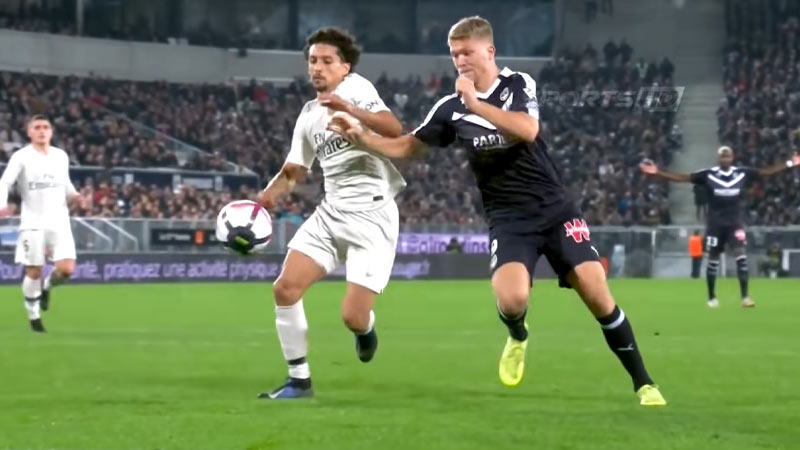
Defensive clearances are essential when under pressure, as they help relieve immediate danger from the goal. This drill focuses on teaching players how to clear the ball effectively and strategically.
Participants practice different types of clearances, such as long punts, headers, and volleyed clearances, depending on the situation. Coaches emphasize the importance of clearing the ball to safe areas rather than giving possession away to the opponents.
Proper technique and decision-making are crucial to avoid providing the opposition with easy chances to attack. This drill sharpens defenders’ clearance abilities, enabling them to maintain defensive stability and initiate counterattacks from a solid defensive foundation.
Defending Transitions Drill
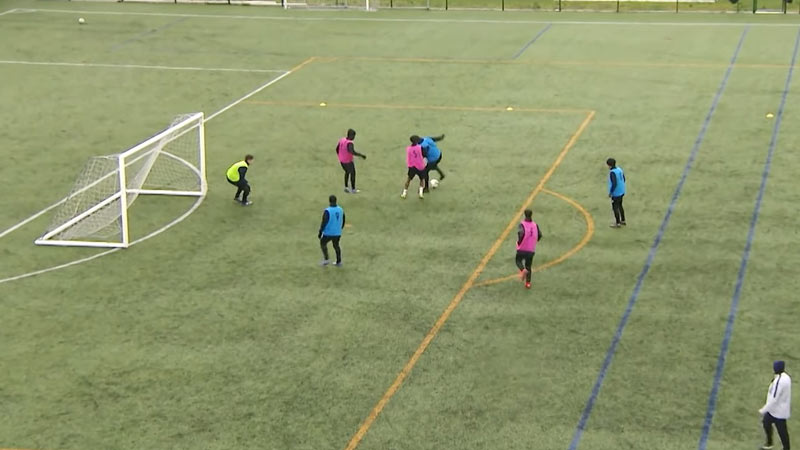
Defending transitions are crucial in modern soccer, where teams quickly switch from attacking to defensive phases and vice versa. In this drill, players practice transitioning into a defensive shape as soon as possession is lost.
They work on regaining compactness, identifying immediate defensive priorities, and pressing collectively to win the ball back. Coaches emphasize quick decision-making and communication to ensure a smooth transition between offensive and defensive duties.
The drill helps players become more adaptable, improving their defensive effectiveness during periods of rapid changes in possession. Ultimately, mastering defensive transitions enhances a team’s ability to maintain control of the game and respond effectively to different game scenarios.
FAQs
Why are defense drills essential in soccer?
Defense drills are fundamental in soccer because they hone crucial skills that enable players to effectively thwart opponents’ attacks. These drills improve players’ positioning, tackling, heading, and communication, all of which are vital for maintaining a solid defense.
A well-trained defensive unit can create turnovers, stop counterattacks, and minimize the opposition’s scoring opportunities.
Can these drills benefit players of all skill levels?
Absolutely! The listed defense drills cater to players of all levels, from beginners to seasoned professionals. For beginners, the drills provide a strong foundation in defensive techniques, while more advanced players can use them to refine their skills and develop tactical understanding.
Coaches can also adapt these drills to suit the specific needs and abilities of their players.
How can these drills improve team cohesion?
Soccer is a team sport, and effective defense requires seamless coordination between players. Many of these drills involve teamwork, communication, and understanding defensive partnerships.
Practicing these drills regularly fosters team cohesion, leading to a more organized and disciplined defense that can work as a cohesive unit to neutralize opposing attacks.
Are there specific drills for defending set pieces?
Yes, there are drills tailored explicitly for defending set pieces, such as corners and free-kicks. Defending set pieces demands specialized techniques and positioning, which these drills address.
By mastering defensive heading and zoning, teams can effectively defend against set-piece situations and minimize the risk of conceding goals from dead-ball situations.
How can these drills benefit attackers?
Even for attackers, understanding defensive drills is crucial. When attackers practice these drills, they gain insight into defenders’ thought processes and tendencies, enabling them to exploit defensive weaknesses.
Additionally, knowing defensive techniques allows attackers to press more effectively and regain possession high up the field, leading to more goal-scoring opportunities.
End Call
A strong defense can be the difference between victory and defeat in soccer, and these Soccer Defense Drills are indispensable tools for honing defensive skills and building a formidable backline.
By incorporating these drills into regular training sessions, players and teams can develop a deep understanding of defensive principles, improve individual abilities, and strengthen their defensive unit’s cohesion.
Whether you’re a defender aiming to become a stalwart at the back or an attacker seeking to enhance your pressing game, these drills will undoubtedly elevate your soccer performance.
Embrace the challenge, commit to the training, and watch as your defensive capabilities soar to new heights on the pitch. Best wishes.

